Though an unwanted trigger, the pandemic brought the best out of the Indian e-commerceindustry and good things are here to stay
By MYBRANDBOOK

While human beings locked up inside their houses and neighborhood grocery stores were shut, it was the machinery of the e-commerce industry that kept the provisions and other essential items flowed to households. Though Digital India, as a concept, has been hovering over the heads of the common man since 2014, its true value was realized when the entire country came to a standstill because of the Covid-induced lockdowns. People felt handicapped with shops and markets, baring few, closed all across the nation.
E-commerce came as a savior, became the order of the day and everything – from products to services – from groceries to vegetables to medicines to cooked foods- everything was being delivered over the e-commerce platform. And the sector saw humongous growth on account of restricted movements in one hand and ease of getting services on the other.
The immediate traction was so much which continues even today, a study by IBM said the pandemic accelerated the shift to e-commerce by five years!
Market Size
The Indian E-commerce industry has been an upward growth trajectory and is expected to surpass the US to become the second largest E-commerce market in the world by 2034. India e-commerce sector will reach $99 billion by 2024 from $30 billion in 2019, expanding at a 27% CAGR, with grocery and fashion/apparel likely to be the key drivers of incremental growth. According to Forrester Research, Indian e-commerce sales rose by ~7-8% in 202 0. The Indian online grocery market is estimated to reach $ 18.2 billion in 2024 from US $1.9 billion in 2019, expanding at a CAGR of 57%.
The Indian e-commerce sector is ranked 9th in cross-border growth in the world, according to Payoneer report. Indian e-commerce is projected to increase from 4% of the total food and grocery, apparel and consumer electronics retail trade in 2020 to 8% by 2025. E-commerce sales in India were estimated to increase by only 7-8% in 2020, compared with 20% in China and the US. The e-commerce market is expected to touch the US$ 84-billion mark in 2021 on the back of healthy growth in the Indian organised retail sector.
The Indian online grocery market is estimated to reach US$ 18.2 billion in 2024 from US $1.9 billion in 2019, expanding at a CAGR of 57%. India’s e-commerce orders volume increased by 36% in the last quarter of 2020, with the personal care, beauty and wellness (PCB&W) segment being the largest beneficiary.
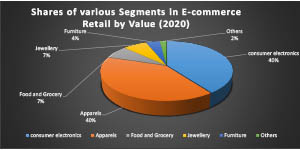 Propelled by rising smartphone penetration, launch of 4G network and increasing consumer wealth, the Indian E-commerce market is expected to grow to US$ 200 billion by 2026 from US$ 38.5 billion in 2017. In India, smartphone shipments reached 150 million units and 5G smartphone shipments crossed 4 million in 2020, driven by high consumer demand post-lockdown.
Propelled by rising smartphone penetration, launch of 4G network and increasing consumer wealth, the Indian E-commerce market is expected to grow to US$ 200 billion by 2026 from US$ 38.5 billion in 2017. In India, smartphone shipments reached 150 million units and 5G smartphone shipments crossed 4 million in 2020, driven by high consumer demand post-lockdown.
In festive season CY20, the Indian e-commerce GMV was recorded at US$ 8.3 billion, a significant jump of 66% over the previous festive season. Similarly, the Indian e-commerce market recorded ~88 million users in festive season CY20, a significant jump of 87% over the previous festive season.
As most Indians have started shopping online rather than stepping outside their houses, the Indian e-commerce sector witnessed an increase. India’s e-commerce festive sale season from October 15 to November 15 in 2020 recorded Rs. 58,000 crore ($ 8.3 billion) worth of gross sales for brands and sellers, up 65% from Rs. 35,000 crore ($ 5 billion) last year.
According to Bain & Company report, India’s social commerce gross merchandise value (GMV) stood at ~$ 2 billion in 2020. By 2025, it is expected to reach $ 20 billion, with a potentially monumental jump to $ 70 billion by 2030, owing to high mobile usage. Tier 2 and 3 cities accounted for a 90% YoY incremental volume and value growth in the e-commerce market in the last quarter of 2020. Also, these cities reported significant gains in share of the overall e-commerce sales volume (from 32% to 46%) and value (from 26% to 43%) in the last quarter of 2020 over the same period last year.
Growth Drivers
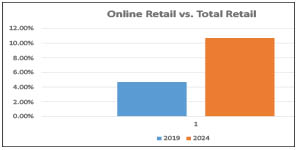 Much of the growth in the industry has been triggered by increasing internet and smartphone penetration. As of March 2021, the number of internet connections in India significantly increased to 780 million, driven by the ‘Digital India’ programme. Out of the total internet connections, ~61% connections were in urban areas, of which 97% connections were wireless. Online penetration of retail is expected to reach 10.7% by 2024 compared with 4.7% in 2019. Moreover, online shoppers in India are expected to reach 220 million by 2025.
Much of the growth in the industry has been triggered by increasing internet and smartphone penetration. As of March 2021, the number of internet connections in India significantly increased to 780 million, driven by the ‘Digital India’ programme. Out of the total internet connections, ~61% connections were in urban areas, of which 97% connections were wireless. Online penetration of retail is expected to reach 10.7% by 2024 compared with 4.7% in 2019. Moreover, online shoppers in India are expected to reach 220 million by 2025.
Smartphone shipments in India increased by ~23% YoY to reach 38 million units in the first quarter of 2021, driven by new product launches and delayed demand from 2020. Xiaomi led the Indian smartphone market with 26% shipping, followed by Samsung (20%).
Huge investments from global players—such as Facebook, which is investing in Reliance Jio—are being recorded in the e-commerce market. Google also reported its first investment worth US$ 4.5 billion in Jio Platforms. This deal was followed by the purchase of Future Group by Reliance Retail, expanding the presence of the Ambani Group in the e-commerce space.
The Government of India’s policies and regulatory frameworks such as 100% Foreign Direct Investment (FDI) in B2B E-commerce and 100% FDI under automatic route under the marketplace model of B2C E-commerce are expected to further propel growth in the sector. As per the new FDI policy, online entities through foreign investment cannot offer the products which are sold by retailers in which they hold equity stake.
For the financial year 2020-21, government procurement from micro and small enterprises was worth Rs. 23,424 crore ($ 3.2 billion).
Major Developments In Recent Times
Some of the major developments in the Indian e-commerce sector in the last fiscal are as follows:
• May 2021: Amazon introduced a video streaming service within its shopping app called MiniTV for users in India.
• May 2021: Flipkart strengthened its grocery infrastructure to cater to customer safety and demand across India.
• May 2021: Flipkart announced that it is in talks with sovereign funds, private equity majors and other investors to raise up to US$ 2 billion at a valuation of US$ 30 billion.
• April 2021: Flipkart announced to acquire Cleartrip, an online travel technology firm. Flipkart announced to purchase 100% shareholding of Cleartrip as the company expands its investments to broaden its digital commerce offerings for customers.
• April 2021: Kirana commerce platform ElasticRun raised US$ 75 million in a round led by existing investors—Avataar Venture Partners and Prosus Ventures.
• March 2021: Amazon acquired Bengaluru-based retail tech start-up Perpule for Rs. 107.6 crore (US$ 14.5 million).
• March 2021: Purplle, an online beauty store, raised US$ 45 million from Sequoia Capital India, Verlinvest, Blume Ventures and JSW Ventures.
• March 2021: Captain Fresh, a B2B marketplace for seafood, raised US$ 3 million in seed capital led by Matrix Partners India and Ankur Capital.
• March 2021: The Confederation of All India Traders (CAIT), which represents 80 million traders and 40,000 trader associations, announced the launch of a mobile app for its e-commerce portal, ‘Bharat E-market’. The association aims to get more small traders to sell online easily through smartphones.
• February 2021: Flipkart partnered with Maharashtra State Khadi & Village Industries Board and Maharashtra Small Scale Industries Development Corporation to bring local artisans and small and medium businesses into the e-commerce ecosystem.
• February 2021: Zomato entered into an agreement with the Ministry of Housing and Urban Affairs (MoHUA) to introduce 300 street food vendors on its portal.
• February 2021: Flipkart Wholesale, the digital B2B marketplace of Flipkart Group will offer grocery on its app with an aim to provide kiranas and small retailers one-stop access to a wide selection of products.
• February 2021: Udaan, a B2B e-commerce firm, announced to expand its warehouse capacity (by 5x) to 50 million sq. ft. across several states in the next 7-8 years.
• January 2021: Flipkart introduced SuperCoin Pay to strengthen its SuperCoin rewards programme by allowing customers to pay through SuperCoins at >5,000 retail outlets across the country.
• January 2021: The Khadi and Village Industries Commission (KVIC) unveiled eKhadiIndia.com, an e-commerce portal, which will comprise >50,000 products, ranging from apparel to home décor.
• January 2021: The B2B e-commerce platform, Udaan raised US$ 280 million (~Rs. 2,048 crore) in additional financing from new investors—Octahedron Capital and Moonstone Capital. Prior to this, in October 2019, the company raised US$ 585 million (~Rs. 4,280 crore) from Tencent, Altimeter, Footpath Ventures, Hillhouse, GGV Capital and Citi Ventures. It is likely to deploy the latest fund towards continued market creation of B2B e-commerce in India and digitise more small businesses across the country.
Government initiatives
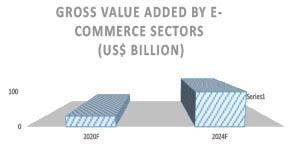 Besides Since 2014, the Government of India has announced various initiatives, namely Digital India, Make in India, Start-up India, Skill India and Innovation Fund. The timely and effective implementation of such programs will likely support growth of E-commerce in the country. Some of the major initiatives taken by the Government to promote E-commerce in India are as follows:
Besides Since 2014, the Government of India has announced various initiatives, namely Digital India, Make in India, Start-up India, Skill India and Innovation Fund. The timely and effective implementation of such programs will likely support growth of E-commerce in the country. Some of the major initiatives taken by the Government to promote E-commerce in India are as follows:
• In a bid to systematise the onboarding process of retailers on e-commerce platforms, the Department for Promotion of Industry and Internal Trade (DPIIT) is reportedly planning to utilise the Open Network for Digital Commerce (ONDC) to set protocols for cataloguing, vendor discovery and price discovery. The department aims to provide equal opportunities to all marketplace players to make optimum use of the e-commerce ecosystem in the larger interest of the country and its citizen.
• National Retail Policy: The government had identified five areas in its proposed national retail policy—ease of doing business, rationalisation of the licence process, digitisation of retail, focus on reforms and an open network for digital commerce—stating that offline retail and e-commerce need to be administered in an integral manner.
• The Consumer Protection (e-commerce) Rules 2020 notified by the Consumer Affairs Ministry in July directed e-commerce companies to display the country of origin alongside the product listings. In addition, the companies will also have to reveal parameters that go behind determining product listings on their platforms.
• Government e-Marketplace (GeM) signed a Memorandum of Understanding (MoU) with Union Bank of India to facilitate a cashless, paperless and transparent payment system for an array of services in October 2019.
• Under the Digital India movement, Government launched various initiatives like Umang, Start-up India Portal, Bharat Interface for Money (BHIM) etc. to boost digitisation.
• In October 2020, Minister of Commerce and Industry, Mr. Piyush Goyal invited start-ups to register at public procurement portal, GeM, and offer goods and services to government organisations and PSUs.
• In October 2020, amending the equalisation levy rules of 2016, the government mandated foreign companies operating e-commerce platforms in India to have permanent account numbers (PAN). It imposed a 2% tax in the FY21 budget on the sale of goods or delivery of services through a non-resident ecommerce operator.
Road Ahead
As the globe is still under-siege because of the pandemic, the trends of last year are expected to continue for another, at least. Some trends, like buying from digital markets, are going to be new normal.
The growth in E-commerce sector will also boost employment, increase revenues from export, increase tax collection by ex-chequers, and provide better products and services to customers in the long-term. Rise in smartphone usage is expected to rise 84% to reach 859 million by 2022.
E-retail market is expected to continue its strong growth - it registered a CAGR of over 35% to reach Rs. 1.8 trillion (US$ 25.75 billion) in FY20. Over the next five years, the Indian e-retail industry is projected to exceed ~300-350 million shoppers, propelling the online Gross Merchandise Value (GMV) to US$ 100-120 billion by 2025.
Overall, the e-commerce industry is expected to grow at 141% through 2025 to reach $111.4 billion in 2025 from $46.2 billion in 2020, as per a report published by Global Data


Happiest Minds brings in an innovative GenAI chatbot
Happiest Minds Technologies has announced the new GenAI chatbot - ‘hAPPI...

Government mandates encryption for CCTV cameras to ensure netw
In the wake of issuing an internal advisory on securing CCTV cameras at g...
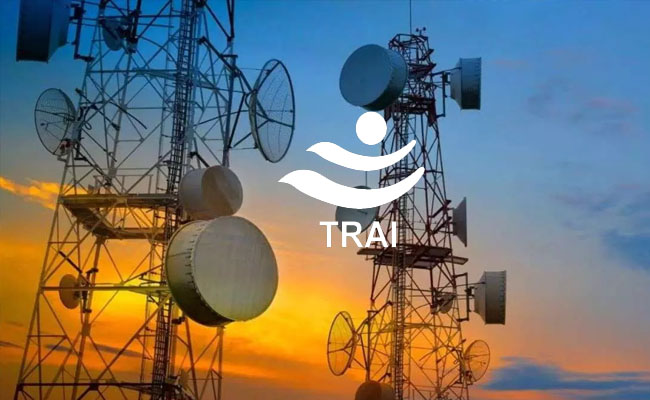
TRAI recommends allowing only Indian entities to participate i
The Telecom Regulatory Authority of India (TRAI) has recommended that onl...

Galaxy AI is available on more devices with Samsung One UI 6.1
Samsung has expanded the range of smartphones to which One UI 6.1 and Gala...

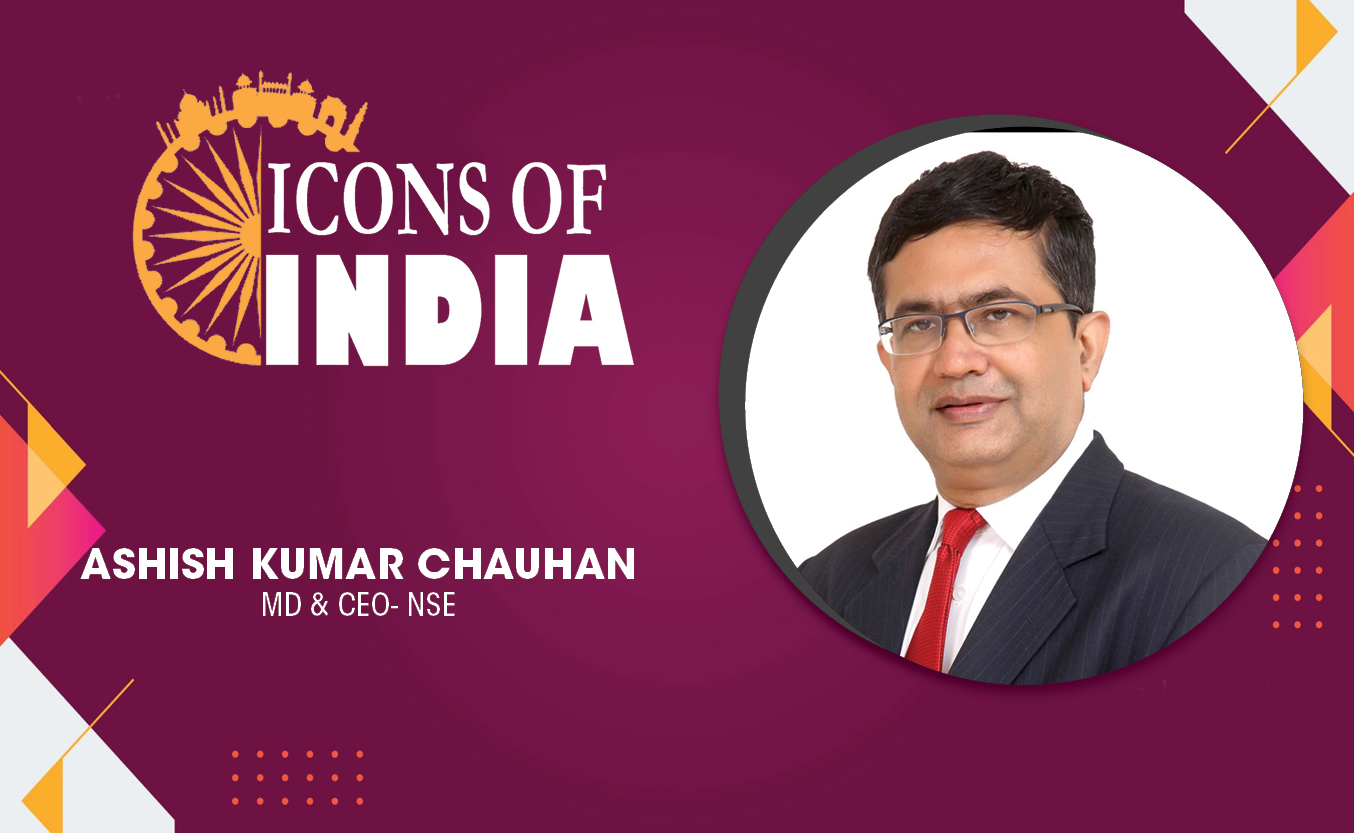
Technology Icons Of India 2023: Ashish Kumar Chauhan
Ashish works as the CEO of the National Stock Exchange (NSE). He is al...
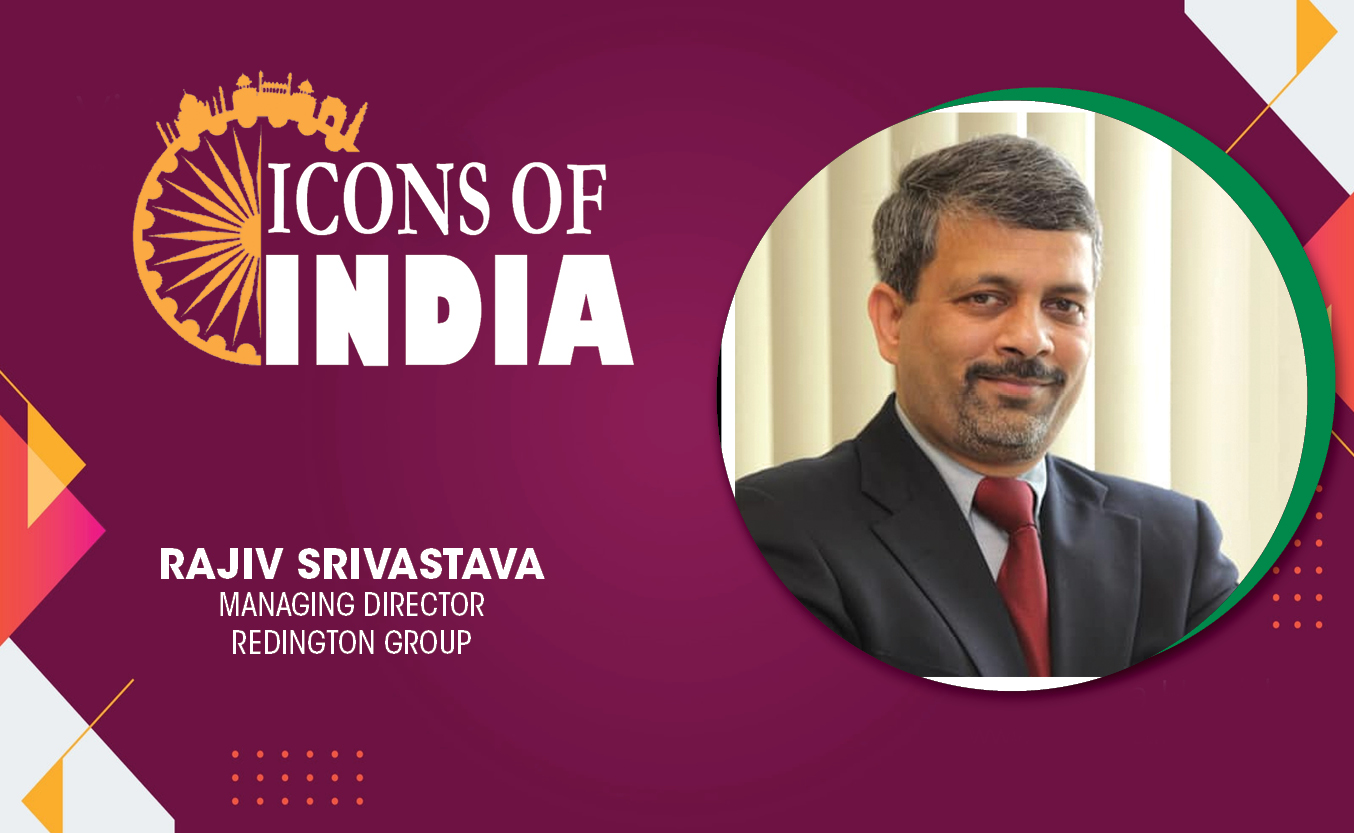
Technology Icons Of India 2023: Rajiv Srivastava
Rajiv Srivastava is the Managing Director of Redington Group. With 35 ...
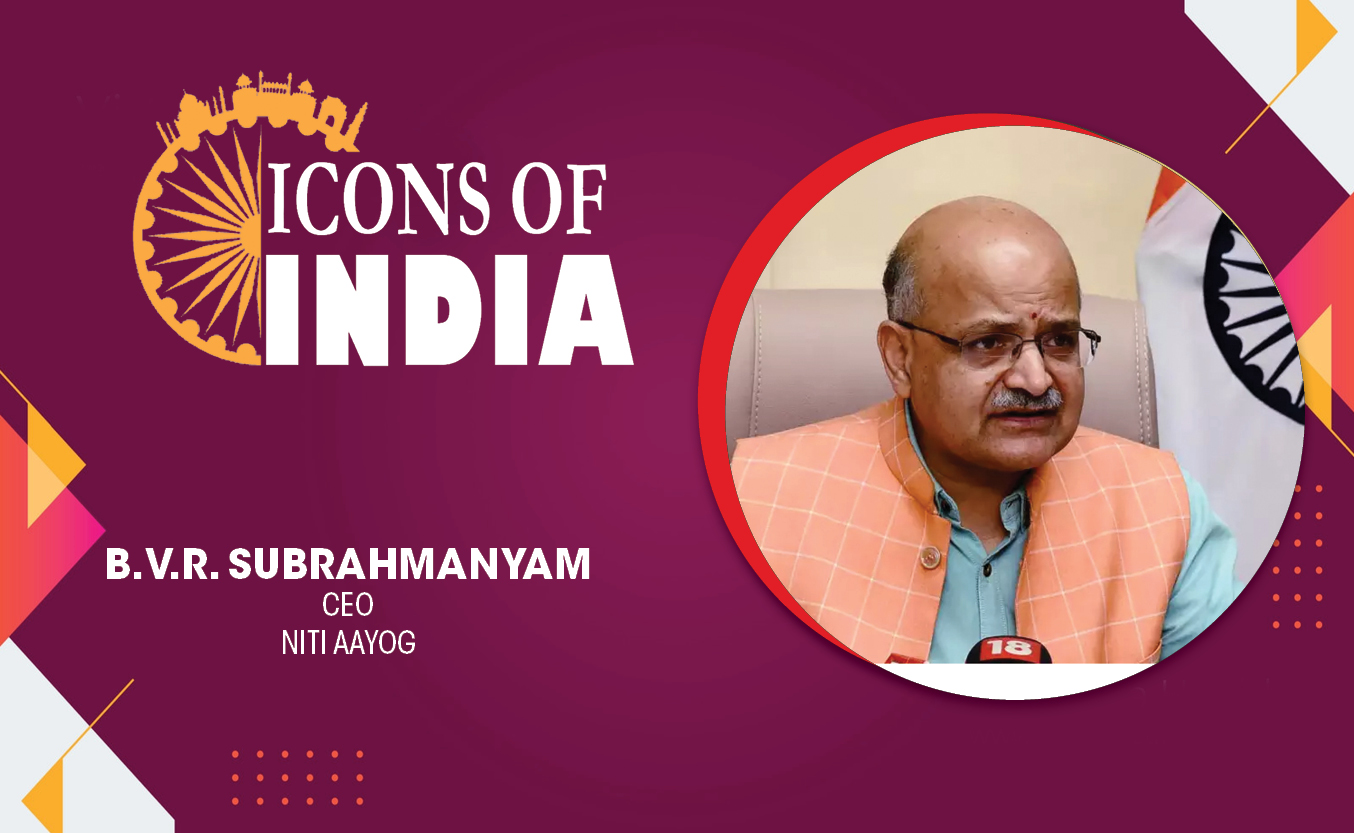
Technology Icons Of India 2023: B.V.R. Subrahmanyam
B.V.R. Subrahmanyam belongs to Andhra Pradesh. He is a 1987-batch IAS ...

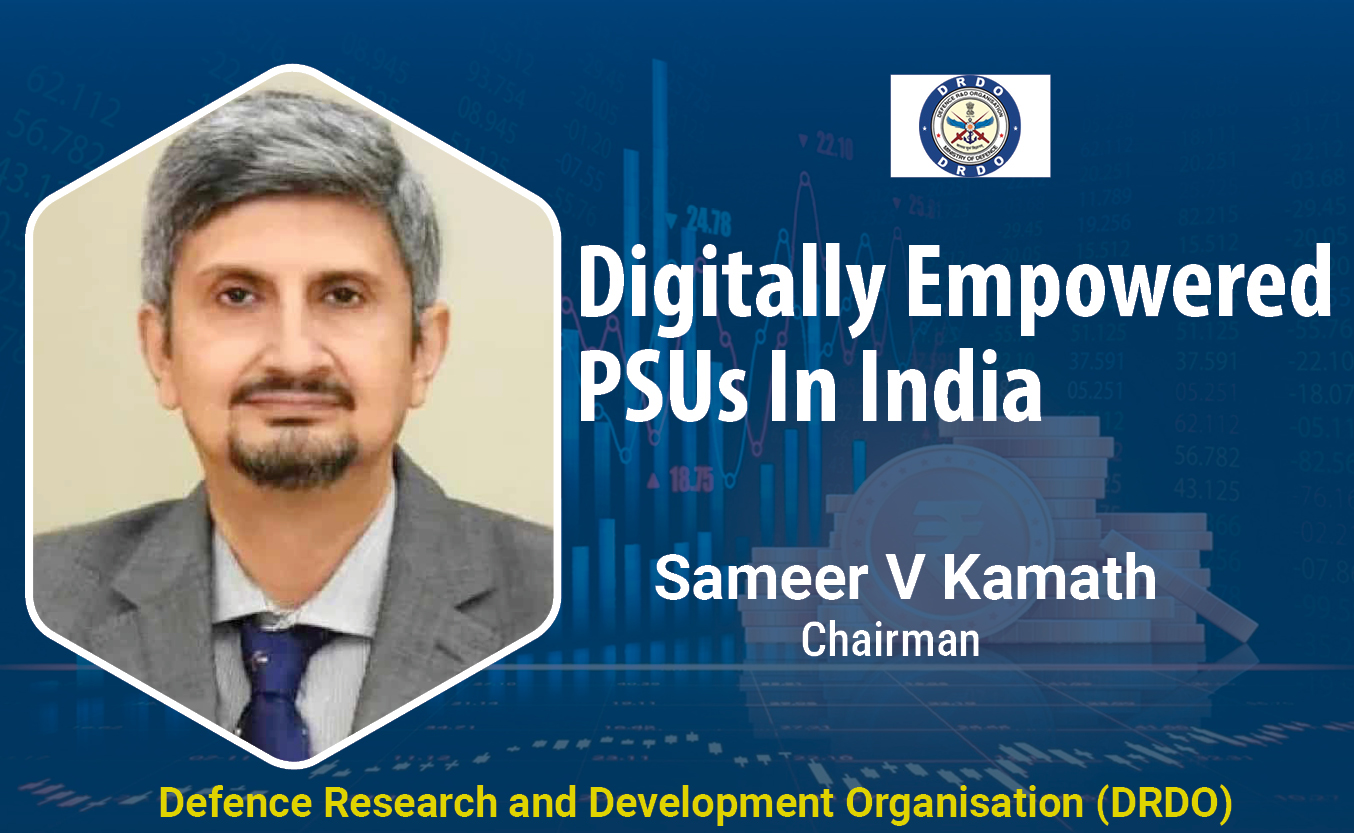
DRDO is India's largest and most diverse research organisation
DRDO is the R&D wing of Ministry of Defence, Govt of India, with a vis...

C-DAC keeps India ahead in IT & Electronics R&D space
Centre for Development of Advanced Computing (C-DAC) is the premier R&...

ECIL continues to keep India ahead in the growth of Information Technology and Electronics
ECIL played a very significant role in the training and growth of high...


ADITYA INFOTECH LTD.
Aditya Infotech Ltd. (AIL) – the technology arm of Aditya Group, is ...

EXCLUSIVE NETWORKS SALES INDIA PVT. LTD.
Exclusive Networks is a globally trusted cybersecurity specialist hel...

REDINGTON INDIA LIMITED
Redington (India) Limited operates in the IT product distribution busi...